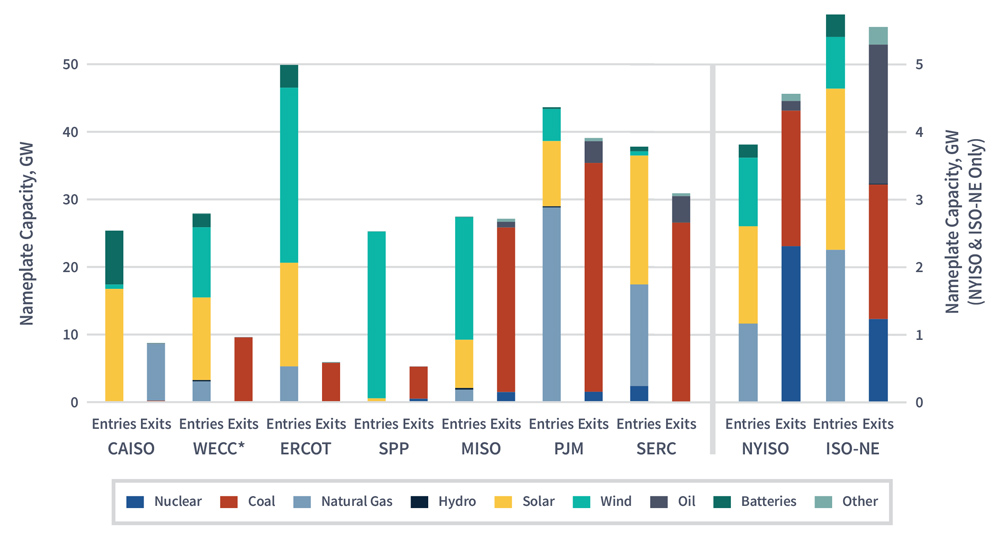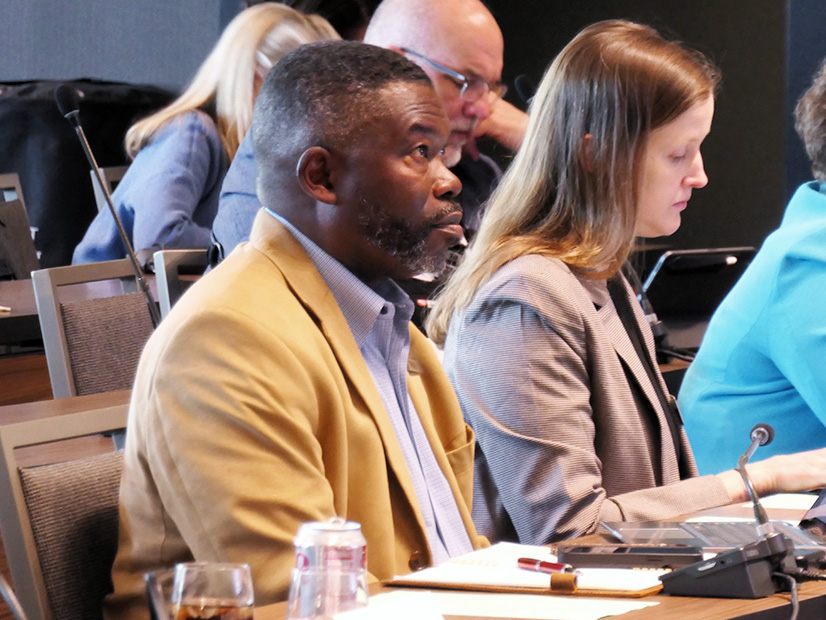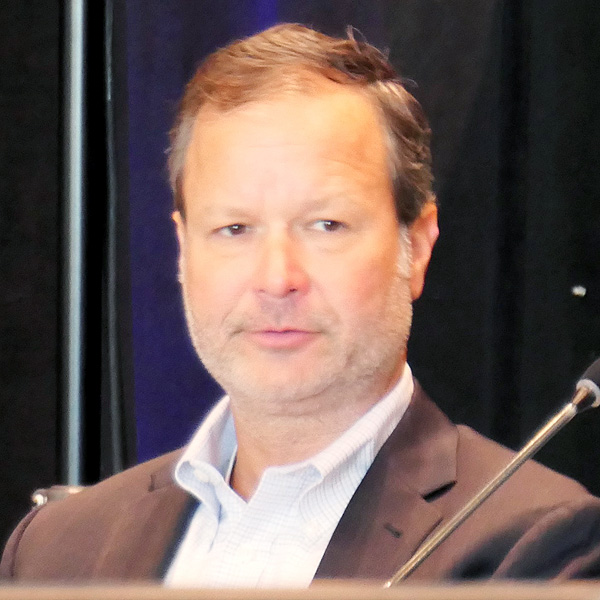HOUSTON — CAISO scored simultaneous victories in heavily contested territory on March 21 after Portland General Electric (PGE) and Idaho Power both signaled their intent to join the ISO’s Extended Day-Ahead Market (EDAM).
The moves significantly boost EDAM’s position in the Pacific Northwest, a region where SPP’s competing Markets+ day-ahead offering has won a strong following among the network of publicly owned utilities entitled to low-cost power from the Bonneville Power Administration — which has been a key participant in developing Markets+ and expects to issue a market “leaning” next month. (See NW Cold Snap Dispute Reflects Divisions over Western Markets.)
“This has been an important and consequential week for improving grid reliability and customer value in the West,” CAISO CEO Elliot Mainzer said in a statement. “We are honored that both Idaho Power and PGE are taking steps to join the EDAM. Their participation will allow for improved optimization and coordination of critical components of the Western electricity network, helping to bridge the Pacific Northwest with the Rocky Mountain and Desert Southwest regions.”
The decisions add to a string of good news for EDAM. In February, the Los Angeles Department of Water and Power (LADWP) received board approval to prepare to join the EDAM, while earlier this month, the Western Area Power Administration’s Desert Southwest Region pulled out of the second phase of developing Markets+.
The commitments by PGE and Idaho Power put five entities in the EDAM camp, including PacifiCorp, the Balancing Authority of Northern California and LADWP.
‘Rigorous Analysis’
PGE’s decision should come as little surprise to electricity sector stakeholders in the West, with multiple industry sources telling RTO Insider as early as last year that the utility firmly favored joining EDAM.
The utility has been participating in CAISO’s Western Energy Imbalance Market (WEIM) since 2017 and “worked extensively to help develop [EDAM] to lower power costs, increase resilience and access more clean energy sources across the West,” CEO Maria Pope said in a statement accompanying the utility’s announcement.
Additionally, Pam Sporborg, the utility’s director of transmission and market services, is co-chair of the Launch Committee for the West-Wide Governance Pathways Initiative, a multistate effort to develop a governance framework for an independent RTO that would expressly include California and build on the WEIM and EDAM.
“We looked at Markets+ very seriously,” Pope told RTO Insider on March 21 on the sidelines of the CERAWeek by S&P Global conference. “I was in Little Rock [at SPP headquarters] last summer, looking at our analysis and how we were thinking of the product that they were offering. We compared that with CAISO’s opportunities, and we did rigorous analysis and came to [our] conclusion as a result of the analysis.”
That analysis showed PGE should expect “anticipated gross cost savings between $6 million and $18 million annually, based on current modeling and depending on the final number of EDAM participants,” PGE spokesperson Andrea Platt told RTO Insider in an email.
Platt also noted that the move “takes advantage of technology and systems PGE has deployed and leverages PGE’s transmission system to connect regional resources across a common market — such as hydropower from the Pacific Northwest, and solar facilities in California and the Desert Southwest.”
PGE is Oregon’s largest utility by customer base, serving about 900,000 customers in a 4,000-square-mile service territory covering seven counties in the northwestern part of the state, with most concentrated in the Portland metro area. It operates about 1,255 circuit-miles of transmission and is co-owner of the California-Oregon Intertie, a key 500-kV link for transferring energy between the Northwest and CAISO.
Speaking on a panel at CERAWeek, Pope emphasized a point repeatedly made by advocates of a single electricity market in the West, including the backers of the Pathways Initiative, highlighting the need to “leverage” the full diversity of resources across the West to deliver “the lowest-cost renewable energy to our customers with significant savings, but also significantly enhance reliability.”
“I think when you see the additional load growth that is coming, you see the continual closure of some of our more carbon-emitting resources across the West, the expense and time it takes to build renewable energy as well as transmission, the work it takes to build out a virtual power plant and really using the distribution system, we need all solutions to be on the table to keep customer prices as low as possible,” Pope told RTO Insider.
While PGE is not required to obtain approval from the Oregon Public Utility Commission to join EDAM, it has provided regulators with an informational filing that outlines its analysis and decision, Platt said.
Letter to CAISO
If PGE’s participation in EDAM looks inevitable, Idaho Power’s decision for the CAISO market appears more tentative, if still likely.
The Boise-based utility conveyed its intentions in a March 21 letter to CAISO COO Mark Rothleder rather than in a formal announcement.
The letter signed by Kathy Anderson, the utility’s transmission and markets senior manager, explains that market studies it commissioned indicate it will benefit financially from extending its current real-time market participation into the day-ahead time frame and that EDAM “could provide the most value for Idaho Power’s customers.”
“Based on the study results and additional analysis performed, we are currently leaning towards EDAM as the preferred day-ahead market in our respective balancing authority area, subject to the necessary regulatory approvals and satisfactory resolution of certain outstanding issues,” Anderson wrote. “Before formally committing to join and implement EDAM, it is important to resolve a few issues.”
The letter cites two of those concerns, including the need for the EDAM to include a “transmission revenue recovery mechanism” that allows participants to be reimbursed for short-term open-access transmission tariff-related revenue losses incurred when transitioning into the market, the only aspect of the market that FERC rejected when approving the EDAM tariff in December. (See CAISO Wins (Nearly) Sweeping FERC Approval for EDAM.)
The other concern relates to ensuring that the EDAM’s default energy bids for gas-fired generators represents the “actual fuel risk and costs of each unit, addressing both the fuel zone and purchase cycle relative to the awards,” a concern for generators that don’t benefit from the same storage ability as that within CAISO’s BAA, the letter says.
The letter also encourages CAISO and stakeholders to address the ISO’s lack of independent governance but says Idaho Power will not require that issue to be resolved before committing to EDAM.
“We are encouraged by the results of the benefits studies and view EDAM as an important option to increase market benefits that our customers are already experiencing in WEIM,” Anderson wrote.
Idaho Power serves 630,000 customers across 24,000 square miles in southern Idaho. The utility operates about 1,988 MW of hydroelectric generation and 4,800 miles of high-voltage transmission, some of which interconnects with the BPA system.
In December, CAISO’s Board of Governors approved a plan for the ISO and Idaho Power to jointly fund the $1 billion Southwest Intertie Project-North (SWIP-N) project, a 285-mile, 500-kV line in Nevada designed to tap energy from Idaho’s wind resources for delivery to markets to the south. The project is now included in the ISO’s 2022/23 transmission portfolio. (See CAISO Board Approves Nevada Transmission Line to Access Idaho Wind.)


